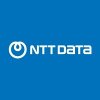


i
Persistent
Systems
Work with us
![]()
Filter interviews by
Persistent Systems Interview Questions and Answers
469 Interview questions
Writing test cases involves defining objectives, identifying requirements, and detailing steps for validation.
Understand the requirements: Gather functional and non-functional requirements from specifications.
Define test objectives: Clearly state what each test case aims to validate, e.g., 'Verify user login functionality.'
Identify test conditions: Determine the scenarios to be tested, such as 'Valid credentials' ...
Functional testing verifies that software functions according to specified requirements and performs its intended tasks.
Identify requirements: Gather functional specifications and user stories to understand what the software should do.
Create test cases: Develop test cases that cover all functional aspects, such as input validation and user interactions.
Execute tests: Run the test cases on the application to ensure...
Using Context API to manage API data in a React application.
Create a Context using React.createContext().
Build a Provider component that fetches data from an API.
Use useEffect to make the API call when the component mounts.
Store the fetched data in a state variable using useState.
Pass the data and any necessary functions through the Provider's value.
Consume the context in child components using useContext.
Implementing a counter in React without useState can be achieved using refs for mutable state management.
Using useRef: You can create a mutable reference using useRef to store the counter value, which persists across renders.
Example: const countRef = useRef(0); to initialize the counter.
Updating the Counter: Use a function to increment the value, e.g., countRef.current += 1; to update the counter.
Triggering Re-ren...
Flattening an array involves converting a multi-dimensional array into a single-dimensional array without using the flat method.
Use reduce: You can use the reduce method to iterate through the array and concatenate elements. Example: `arr.reduce((acc, val) => acc.concat(val), [])`.
Use recursion: Create a function that checks if an element is an array and flattens it recursively. Example: `function flatten(arr) ...
In Linux shell scripting, use the -e flag to check if a file exists.
Use the command: if [ -e $filename ]; then echo 'File exists'; fi
The -e flag checks for the existence of a file or directory.
You can also use -f for regular files: if [ -f $filename ]; then echo 'Regular file exists'; fi
For directories, use -d: if [ -d $dirname ]; then echo 'Directory exists'; fi
This task involves removing a specified number of characters from a string based on asterisks indicating the count.
Identify the number of asterisks in the string to determine how many characters to remove.
Use string slicing to remove the specified characters from the original string.
Example: For 'Persis****', remove 4 characters to get 'Pe'.
Consider edge cases, such as when the number of asterisks exceeds the leng...
Implementing budget controls involves setting clear financial goals, tracking expenses, and adjusting plans as needed.
Establish a detailed budget at the beginning of the project, including all anticipated expenses.
Regularly monitor actual expenses against the budget to identify any discrepancies or overspending.
Implement approval processes for any changes or additional expenses that may arise during the project.
Ut...
A risk is a potential future problem that may or may not occur, while an issue is a current problem that is already happening.
Risk is a potential future problem, while an issue is a current problem
Risks can be identified and mitigated before they occur, while issues need to be resolved
Examples of risks include budget overruns or resource constraints, while examples of issues include software bugs or project delays
Yes, I have experience in handling enterprise change management.
Led cross-functional teams through major system upgrades
Implemented new processes to improve efficiency and productivity
Communicated changes effectively to stakeholders at all levels
Managed resistance to change and ensured successful adoption
Utilized change management tools and methodologies such as ADKAR or Prosci
Persistent Systems Interview Experiences
639 interviews found
I appeared for an interview in Jan 2025.
(5 Questions)
- Q1. What is the architecture of the Java Virtual Machine (JVM)?
- Ans.
The Java Virtual Machine (JVM) is an abstract computing machine that enables a computer to run Java programs.
JVM is platform-independent and converts Java bytecode into machine code.
It consists of class loader, runtime data areas, execution engine, and native method interface.
JVM memory is divided into method area, heap, stack, and PC register.
Examples of JVM implementations include Oracle HotSpot, OpenJ9, and GraalVM.
- Q2. What is the default connection pooling in Spring Boot, and how can it be customized?
- Ans.
The default connection pooling in Spring Boot is HikariCP, which can be customized through properties in the application.properties file.
HikariCP is the default connection pooling library in Spring Boot, known for its high performance and low overhead.
To customize the connection pooling, you can modify properties like 'spring.datasource.hikari.*' in the application.properties file.
For example, you can set maximum pool ...
- Q3. What are the best practices for optimizing a Spring Boot application?
- Ans.
Best practices for optimizing a Spring Boot application
Use Spring Boot Actuator to monitor and manage application performance
Implement caching mechanisms like Spring Cache to reduce database calls
Optimize database queries and indexes for better performance
Use asynchronous processing with Spring's @Async annotation for non-blocking operations
Profile and analyze application performance using tools like VisualVM or JProfi...
- Q4. What is a heap dump, and how can it be used to identify memory leaks?
- Ans.
A heap dump is a snapshot of the memory usage of a Java application at a specific point in time.
Heap dumps can be generated using tools like jmap or VisualVM.
They provide detailed information about objects in memory, their sizes, and references.
Analyzing a heap dump can help identify memory leaks by pinpointing objects that are consuming excessive memory.
Common signs of memory leaks in a heap dump include a large numbe...
- Q5. How can you diagonally iterate through and print the elements of a 2D array?program
- Ans.
Diagonally iterate through and print elements of a 2D array of strings.
Use nested loops to iterate through rows and columns of the 2D array.
Calculate the diagonal elements by incrementing row and column indices together.
Print the elements as you iterate through the diagonal of the array.
I appeared for an interview in Feb 2025.
(2 Questions)
- Q1. Flat an array without using flat in Js
- Ans.
Flattening an array involves converting a multi-dimensional array into a single-dimensional array without using the flat method.
Use reduce: You can use the reduce method to iterate through the array and concatenate elements. Example: `arr.reduce((acc, val) => acc.concat(val), [])`.
Use recursion: Create a function that checks if an element is an array and flattens it recursively. Example: `function flatten(arr) { ret...
- Q2. Code a counter without using useState?
- Ans.
Implementing a counter in React without useState can be achieved using refs for mutable state management.
Using useRef: You can create a mutable reference using useRef to store the counter value, which persists across renders.
Example: const countRef = useRef(0); to initialize the counter.
Updating the Counter: Use a function to increment the value, e.g., countRef.current += 1; to update the counter.
Triggering Re-renders:...
(1 Question)
- Q1. Make an api call and store data and pass using context api
- Ans.
Using Context API to manage API data in a React application.
Create a Context using React.createContext().
Build a Provider component that fetches data from an API.
Use useEffect to make the API call when the component mounts.
Store the fetched data in a state variable using useState.
Pass the data and any necessary functions through the Provider's value.
Consume the context in child components using useContext.
I applied via Walk-in and was interviewed in Nov 2024. There were 3 interview rounds.
It's walkin, so they conducted 1 technical mcqs round.
(11 Questions)
- Q1. Multi threading
- Q2. Internal working of hashmap
- Q3. Spring batch related
- Q4. Non repeating characters in a array
- Q5. 3rd highest salary
- Q6. Qualifier vs primary
- Q7. Controller vs restcontroller
- Q8. Spring boot annotataions
- Q9. Oops concepts with examples
- Q10. Spring batch configuration
- Q11. They covered all java, spring and Microservices
(4 Questions)
- Q1. Microservices architecture
- Q2. How do Microservices communicate
- Ans.
Microservices communicate with each other through various communication protocols like HTTP, messaging queues, and gRPC.
Microservices can communicate over HTTP using RESTful APIs.
Messaging queues like RabbitMQ or Kafka can be used for asynchronous communication between microservices.
gRPC is a high-performance, open-source RPC framework that can be used for communication between microservices.
Service discovery mechanism...
- Q3. How to access the Microservice end point
- Q4. Why we use microservices
- Ans.
Microservices allow for modular, scalable, and flexible software development by breaking down applications into smaller, independent services.
Microservices enable easier maintenance and updates as each service can be developed, deployed, and scaled independently.
They improve fault isolation, as failures in one service do not necessarily affect the entire application.
Microservices promote agility and faster time-to-mark...
Skills evaluated in this interview
I applied via Naukri.com and was interviewed in Dec 2024. There were 3 interview rounds.
(3 Questions)
- Q1. Core Java questions and multithreading basics like executor service
- Q2. Spring boot error handling, simple questions on distributed systems
- Q3. Coding question. Requested to do in O(n ) time complexity as oppsed to O(n2) suggested by me.
(2 Questions)
- Q1. Given an array find all the numbers whose sum is 11 using streams only
- Ans.
Use Java Streams to find pairs in an array that sum to 11.
Use IntStream.range to iterate through the array indices.
For each element, check if there's a complement (11 - current element) in the array.
Use a Set to store seen numbers for efficient lookup.
Example: For array [1, 10, 2, 9, 3, 8], pairs are (10, 1), (9, 2), (8, 3).
- Q2. Spring boot basics, hibernate queries, what is native query
(2 Questions)
- Q1. Design patterns in Java, write a singleton class
- Q2. Spring IOC and AOP
Interview Preparation Tips
I appeared for an interview in Jan 2025.
(2 Questions)
- Q1. How to check if a file exist or not in the Linux shell scripting? Ans: using -e $filename
- Ans.
In Linux shell scripting, use the -e flag to check if a file exists.
Use the command: if [ -e $filename ]; then echo 'File exists'; fi
The -e flag checks for the existence of a file or directory.
You can also use -f for regular files: if [ -f $filename ]; then echo 'Regular file exists'; fi
For directories, use -d: if [ -d $dirname ]; then echo 'Directory exists'; fi
- Q2. One python coding question in which we have to remove n number of characters from string. Persis**** As there are 4 stars we have to remove 4 characters "sisr" and return the result.
- Ans.
This task involves removing a specified number of characters from a string based on asterisks indicating the count.
Identify the number of asterisks in the string to determine how many characters to remove.
Use string slicing to remove the specified characters from the original string.
Example: For 'Persis****', remove 4 characters to get 'Pe'.
Consider edge cases, such as when the number of asterisks exceeds the length of...
Interview Preparation Tips
It might not give exact but you have to finetune your queries to chatgpt so it will provide you better questions.
A negative experience as the HR didnt call me back even after I was able to answer all the questions. I called HR back but she said she will call back after checking the feedback, but still didn't get the call.
I applied via Naukri.com and was interviewed in Oct 2024. There were 2 interview rounds.
(3 Questions)
- Q1. How do you handle difficult stakeholders?
- Q2. Insurance policy lifecycle
- Q3. Simple Join sql query
(2 Questions)
- Q1. Difference between BA and PO
- Ans.
Business Analyst (BA) focuses on understanding business needs and requirements, while Product Owner (PO) focuses on defining and prioritizing product features.
BA analyzes business processes and systems to identify areas for improvement, while PO works closely with stakeholders to define product features and prioritize the product backlog.
BA typically works on multiple projects simultaneously, while PO is dedicated to a...
- Q2. No relevant questions in 2nd round
Interview Preparation Tips
I appeared for an interview in Jan 2025.
(2 Questions)
- Q1. Write a program using Java to find the counts of specified characters and replace them with corresponding numbers.
- Ans.
A Java program to find and replace specified characters with corresponding numbers in an array of strings.
Iterate through each string in the array
Count the occurrences of specified characters
Replace the characters with corresponding numbers
Return the modified array of strings
- Q2. Given an array, how can you separate the even and odd numbers, placing the even numbers on the right side and the odd numbers on the left side?
- Ans.
Separate even and odd numbers in an array, placing even numbers on the right side and odd numbers on the left side.
Iterate through the array and check if each element is even or odd.
Create two separate arrays to store even and odd numbers.
Append even numbers to one array and odd numbers to another.
Finally, combine the two arrays with even numbers on the right and odd numbers on the left.
Interview Preparation Tips
I applied via Naukri.com and was interviewed in Aug 2024. There were 2 interview rounds.
(12 Questions)
- Q1. Tell me about yourself and Project
- Ans.
I am a Senior Data Engineer with experience in developing data pipelines and optimizing data storage for various projects.
Developed data pipelines using Apache Spark for real-time data processing
Optimized data storage using technologies like Hadoop and AWS S3
Worked on a project to analyze customer behavior and improve marketing strategies
- Q2. What was you day-to-day job in your project
- Ans.
My day-to-day job in the project involved designing and implementing data pipelines, optimizing data workflows, and collaborating with cross-functional teams.
Designing and implementing data pipelines to extract, transform, and load data from various sources
Optimizing data workflows to improve efficiency and performance
Collaborating with cross-functional teams including data scientists, analysts, and business stakeholde...
- Q3. Spark Architecture
- Q4. How DAG handle Fault tolerance?
- Ans.
DAGs handle fault tolerance by rerunning failed tasks and maintaining task dependencies.
DAGs rerun failed tasks automatically to ensure completion.
DAGs maintain task dependencies to ensure proper sequencing.
DAGs can be configured to retry failed tasks a certain number of times before marking them as failed.
- Q5. What is shuffling? How to Handle Shuffling?
- Ans.
Shuffling is the process of redistributing data across partitions in a distributed computing environment.
Shuffling is necessary when data needs to be grouped or aggregated across different partitions.
It can be handled efficiently by minimizing the amount of data being shuffled and optimizing the partitioning strategy.
Techniques like partitioning, combiners, and reducers can help reduce the amount of shuffling in MapRed...
- Q6. What is the difference between repartition and Coelsce?
- Ans.
Repartition increases or decreases the number of partitions in a DataFrame, while Coalesce only decreases the number of partitions.
Repartition can increase or decrease the number of partitions in a DataFrame, leading to a shuffle of data across the cluster.
Coalesce only decreases the number of partitions in a DataFrame without performing a full shuffle, making it more efficient than repartition.
Repartition is typically...
- Q7. How do you handle Incremental data?
- Ans.
Incremental data is handled by identifying new data since the last update and merging it with existing data.
Identify new data since last update
Merge new data with existing data
Update data warehouse or database with incremental changes
- Q8. What is SCD ??
- Ans.
SCD stands for Slowly Changing Dimension, a concept in data warehousing to track changes in data over time.
SCD is used to maintain historical data in a data warehouse.
There are three types of SCD - Type 1, Type 2, and Type 3.
Type 1 SCD overwrites old data with new data.
Type 2 SCD creates a new record for each change, preserving history.
Type 3 SCD maintains both old and new values in the same record.
SCD is important for...
- Q9. Scenerio based questions related to Spark ?
- Q10. Two SQL Codes and Two Python codes like reverse a string ?
- Ans.
Reverse a string using SQL and Python codes.
In SQL, use the REVERSE function to reverse a string.
In Python, use slicing with a step of -1 to reverse a string.
- Q11. Find top 5 countries with highest population in Spark and SQL
- Ans.
Use Spark and SQL to find the top 5 countries with the highest population.
Use Spark to load the data and perform data processing.
Use SQL queries to group by country and sum the population.
Order the results in descending order and limit to top 5.
Example: SELECT country, SUM(population) AS total_population FROM table_name GROUP BY country ORDER BY total_population DESC LIMIT 5
- Q12. Using two tables find the different records for different joins
- Ans.
To find different records for different joins using two tables
Use the SQL query to perform different joins like INNER JOIN, LEFT JOIN, RIGHT JOIN, and FULL JOIN
Identify the key columns in both tables to join on
Select the columns from both tables and use WHERE clause to filter out the different records
(7 Questions)
- Q1. What is a catalyst optimiser? How it works?
- Ans.
A catalyst optimizer is a query optimization tool used in Apache Spark to improve performance by generating an optimal query plan.
Catalyst optimizer is a rule-based query optimization framework in Apache Spark.
It leverages rules to transform the logical query plan into a more optimized physical plan.
The optimizer applies various optimization techniques like predicate pushdown, constant folding, and join reordering.
By o...
- Q2. Tell me about the optimization you used in your project.
- Ans.
Used query optimization techniques to improve performance in database queries.
Utilized indexing to speed up search queries.
Implemented query caching to reduce redundant database calls.
Optimized SQL queries by restructuring joins and subqueries.
Utilized database partitioning to improve query performance.
Used query profiling tools to identify and optimize slow queries.
- Q3. Pyspark question related to merging two schemas?
- Ans.
Merging two schemas in PySpark involves combining DataFrames with different structures into a unified format.
Use the `unionByName()` method to merge DataFrames with different column names.
Example: df1.unionByName(df2, allowMissingColumns=True) merges df1 and df2, filling missing columns with nulls.
For schema evolution, use `mergeSchema` option when reading from Parquet files.
Example: spark.read.option('mergeSchema', 't...
- Q4. What is the best approach to finding whether the data frame is empty or not?
- Ans.
Use the len() function to check the length of the data frame.
Use len() function to get the number of rows in the data frame.
If the length is 0, then the data frame is empty.
Example: if len(df) == 0: print('Data frame is empty')
- Q5. Spark Architecture
- Q6. How do you decide on cores and worker nodes?
- Ans.
Cores and worker nodes are decided based on the workload requirements and scalability needs of the data processing system.
Consider the size and complexity of the data being processed
Evaluate the processing speed and memory requirements of the tasks
Take into account the parallelism and concurrency needed for efficient data processing
Monitor the system performance and adjust cores and worker nodes as needed
- Q7. What happens when we enforce schema ?
- Ans.
Enforcing schema ensures that data conforms to a predefined structure and rules.
Ensures data integrity by validating incoming data against predefined schema
Helps in maintaining consistency and accuracy of data
Prevents data corruption and errors in data processing
Can lead to rejection of data that does not adhere to the schema
Interview Preparation Tips
- SQL
- Pyspark
- Python
- Spark
- Database
Skills evaluated in this interview
I applied via Recruitment Consulltant and was interviewed in Dec 2024. There was 1 interview round.
(2 Questions)
- Q1. Asked about GitHub Actions and octopus Deploy and AWS related questions
- Q2. Terraform about daily tasks
- Ans.
Terraform daily tasks involve infrastructure provisioning, configuration management, and automation.
Creating and managing infrastructure using Terraform scripts
Updating and modifying existing infrastructure as needed
Automating deployment processes for applications
Implementing version control for Terraform configurations
Monitoring and troubleshooting Terraform deployments
Interview Preparation Tips
(3 Questions)
- Q1. Explain about RPA,
- Ans.
RPA stands for Robotic Process Automation, which involves using software robots to automate repetitive tasks.
RPA uses software robots to automate repetitive tasks, mimicking human actions.
It can be used to streamline business processes, increase efficiency, and reduce human error.
RPA tools can interact with existing applications, extract data, and perform tasks across multiple systems.
Examples of RPA tools include UiPa...
- Q2. What RE-Framework
- Ans.
RE-Framework is a Robotic Enterprise Framework for automating business processes using UiPath.
RE-Framework is a template designed by UiPath for building scalable and efficient automation projects.
It includes pre-built workflows for exception handling, logging, and reusability of components.
RE-Framework follows a state machine design pattern to manage the flow of automation.
It allows for easy integration of new processe...
- Q3. Etc..
(1 Question)
- Q1. One on One Round of Interview with Lient
(1 Question)
- Q1. Salary Discussion
What people are saying about Persistent Systems





Persistent Systems Interview FAQs
The duration of Persistent Systems interview process can vary, but typically it takes about less than 2 weeks to complete.
Tell us how to improve this page.
Persistent Systems Interviews By Designations
- Persistent Systems Software Engineer Interview Questions
- Persistent Systems Senior Software Engineer Interview Questions
- Persistent Systems Lead Engineer Interview Questions
- Persistent Systems Software Developer Interview Questions
- Persistent Systems Lead Software Engineer Interview Questions
- Persistent Systems Project Lead Interview Questions
- Persistent Systems Java Developer Interview Questions
- Persistent Systems Salesforce Developer Interview Questions
- Show more
Interview Questions for Popular Designations
- Software Engineer Interview Questions
- Senior Software Engineer Interview Questions
- Software Developer Interview Questions
- Lead Engineer Interview Questions
- Lead Software Engineer Interview Questions
- Project Lead Interview Questions
- Java Developer Interview Questions
- Salesforce Developer Interview Questions
- Show more
Overall Interview Experience Rating
based on 591 interview experiences
Difficulty level
Duration
Explore Interview Questions and Answers for Top Skills at Persistent Systems
Interview Questions from Similar Companies
Persistent Systems Reviews and Ratings
based on 4.4k reviews
Rating in categories
|
Software Engineer
4.6k
salaries
| ₹2.5 L/yr - ₹11 L/yr |
|
Senior Software Engineer
4.5k
salaries
| ₹5.1 L/yr - ₹18.8 L/yr |
|
Lead Software Engineer
3.6k
salaries
| ₹7.4 L/yr - ₹19.3 L/yr |
|
Lead Engineer
3.5k
salaries
| ₹10 L/yr - ₹27.4 L/yr |
|
Project Lead
2.1k
salaries
| ₹12.6 L/yr - ₹40 L/yr |

Cognizant

TCS

IBM

LTIMindtree
- Home >
- Interviews >
- Persistent Systems Interview Questions














